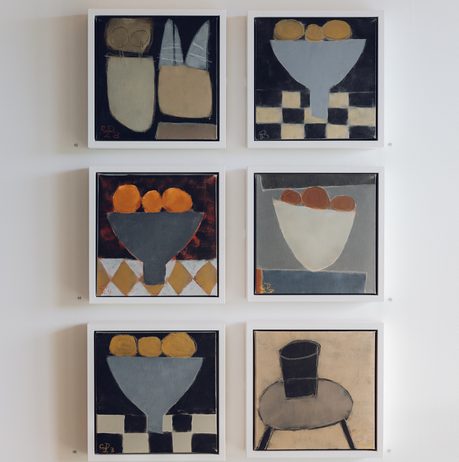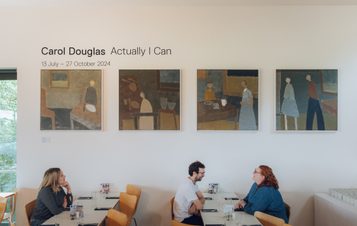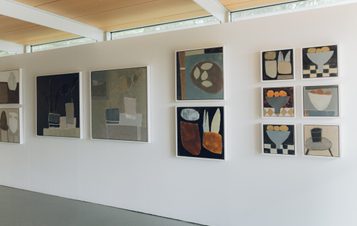
About Carol Douglas: Actually I Can
York-based painter Carol Douglas was dissuaded from studying art at school, but developed her own style after taking up painting in her 60s, inspiring the title of the exhibition - Actually I Can.
Following a very successful career as a sociologist and community worker, she enrolled onto an art foundation course at York College when she was in her 60s. Now in her 70s, Douglas has exhibited in several galleries in the UK, collaborated with brands including TOAST, and her work is collected worldwide.
This exhibition has encouraged me to revisit my back catalogue of work, drawing from and bringing together my favourite ideas from across my painting career thus far, putting it all together for one show. Having the opportunity to present in such a prestigious art venue is a joy and a privilege.
- Carol Douglas

She paints with acrylic, applying it to the canvas using rollers rather than the traditional paint brush to build the paint up layer after layer, with a warm palette of greys, browns and mustards. Influenced by Outsider Art, Art Brut and Folk Art – terms used to describe art with a naïve and decorative quality – her alluring paintings depict recognisable household objects and people in domestic settings, and are inspired by her experiences of everyday life.
Actually I Can was her largest exhibition to date.
The exhibition included 51 new paintings of various sizes, all of which were for sale at YSP Shop.







